The Kalahari Desert is located in Southern Africa, covering a huge chunk of Botswana and parts of Namibia and South Africa. It is estimated to cover a distance of around 930,000 km (559234,073 miles). A desert is a region which receives an average of 250mm of rain annually. In essence, the Kalahari is a semi-desert, and not a true desert, as it receives a significantly higher amount of precipitation than what is considered ideal for a desert.
The Kalahari is Africa’s second largest desert after the Sahara Desert and the sixth biggest desert by area on Earth. When translated to local Tswana dialect, the word Kalahari means “a waterless place” or “the great thirst”.
The large semi-arid sandy savannah is famous for its rich and diverse population of wildlife, prominent sand dunes and huge salt pans.
- Lion and other big cats (including the Cheetah and Leopard)
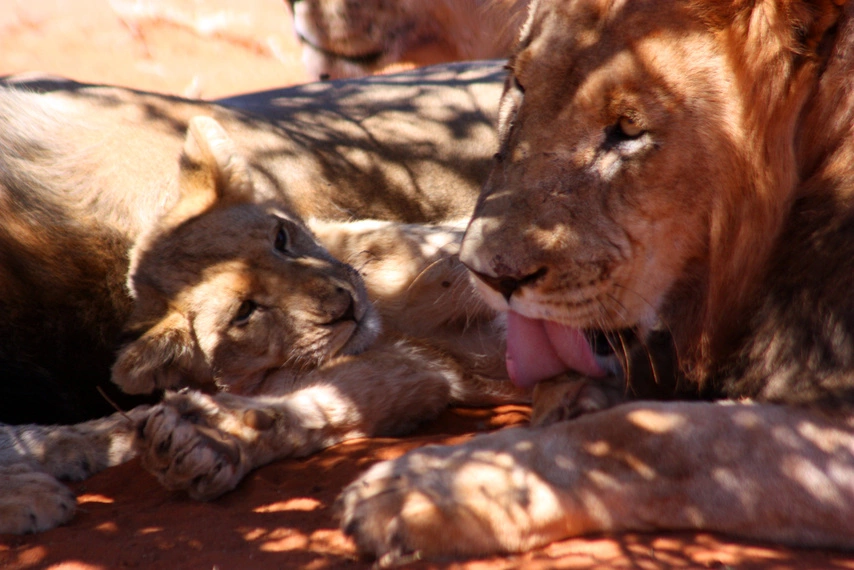
The big cat family is well represented at the Kalahari Desert with the northern area boasting of a larger number of these predators. The king of the jungle (lion), the fastest animal on the land (cheetah) and the tree climbing with never changing spots leopard are all alive and kicking and can be spotted in the national parks located within the red soil desert area. The stand out big cat is Kalahari black-maned lions.
- Meerkat
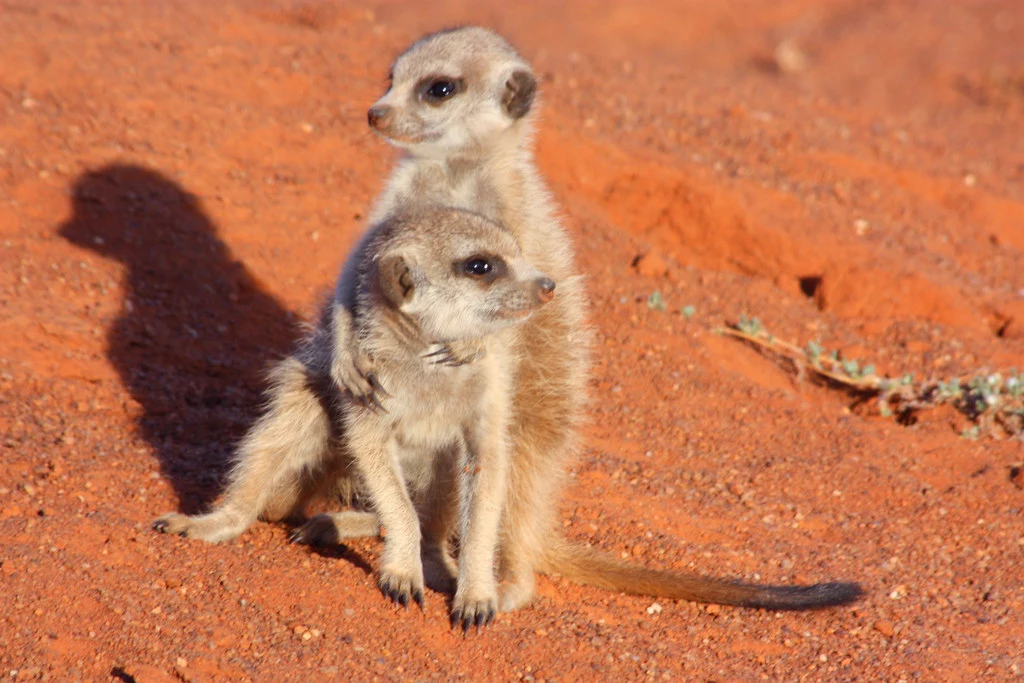
Widely considered as the face of the African comradery largely due to their iconic upright stance and their social mannerisms. Meerkats are in abundance in the Kalahari Desert and being a social living animal, the small mongooses exist in packs of 30-40 individuals, called a gang or mob.
Meerkats have a gestation period of around three months (10–11 weeks) and can give birth to 3 or 4 babies. Therefore, the meerkat mob is essentially a clan which is quite convenient considering meerkats rely on strength in numbers to hunt, guard and overall survival.
- Elephant
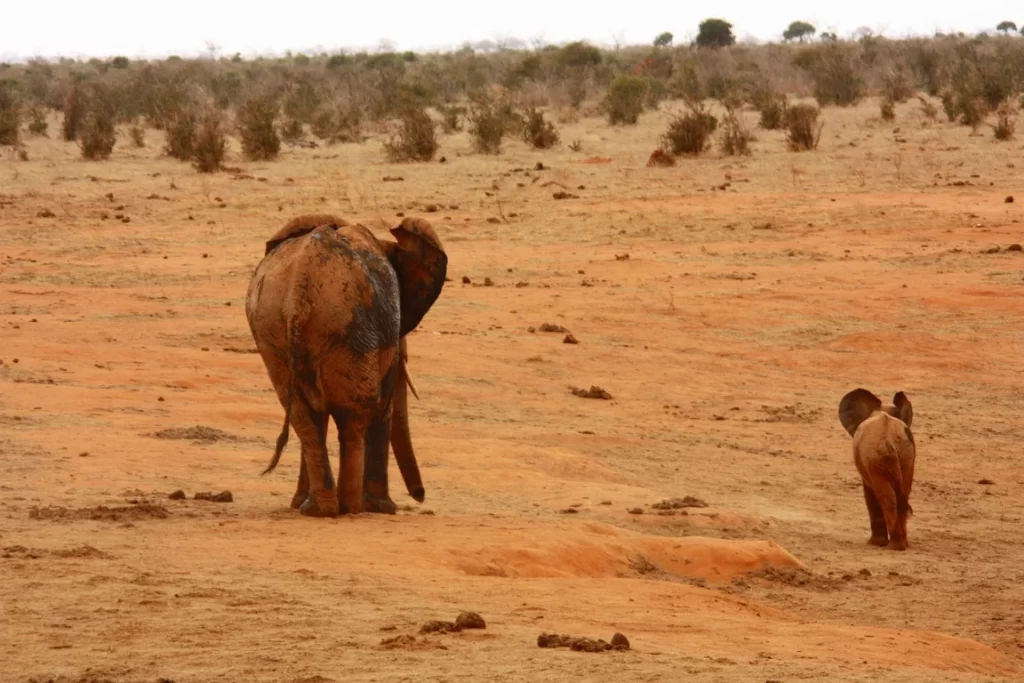
Elephants are the largest land mammals on earth, majority of which are found in Botswana, and by extension the Kalahari Desert. In Africa, there are two species of elephant; African savanna (bush) elephant and the African forest elephant.
In adapting to the Kalahari Desert conditions, elephants have their sweat pores only between their pores. They also have a pharyngeal pouch that is located within their throat which holds water. On hot waterless days, withdraw the water from their mouths using their trunks and spray themselves with it to cool down.
- Wildebeest

The wildebeest or gnu is classified as a member of the antelope family. In Africa; there are two species of wildebeest; blue wildebeest and black wildebeest.
Seasonal migration is how the wildebeest guarantees its survival in the Kalahari Desert. The herbivores are in constant search of water (which they drink twice a day) and open, short-grass pan habitats. This demanding diet is what ensures that the wildebeests are always on the move in herds.
- Rhino
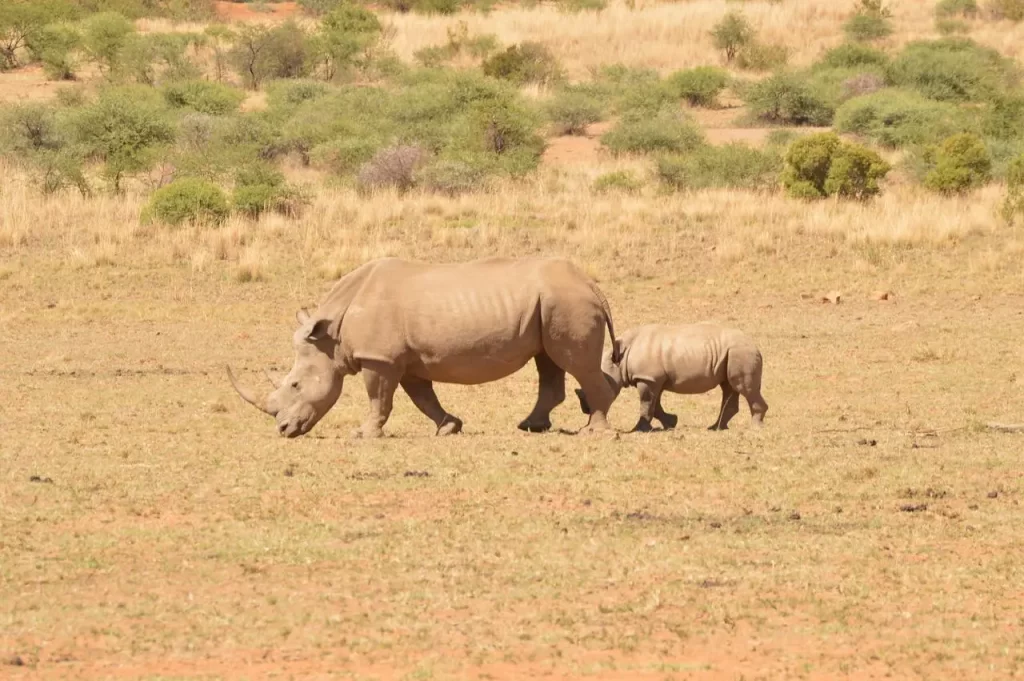
The name rhinoceros means nose-horn in the Greek language. Rhinos are a highly endangered species because of their horns which are more valuable by weight than most precious metals and narcotics. Poachers have killed over 7,100 rhinos over the past decade. As a result, most rhinos are nowadays protected in national parks, reserves and sanctuaries.
- African Wild Dog
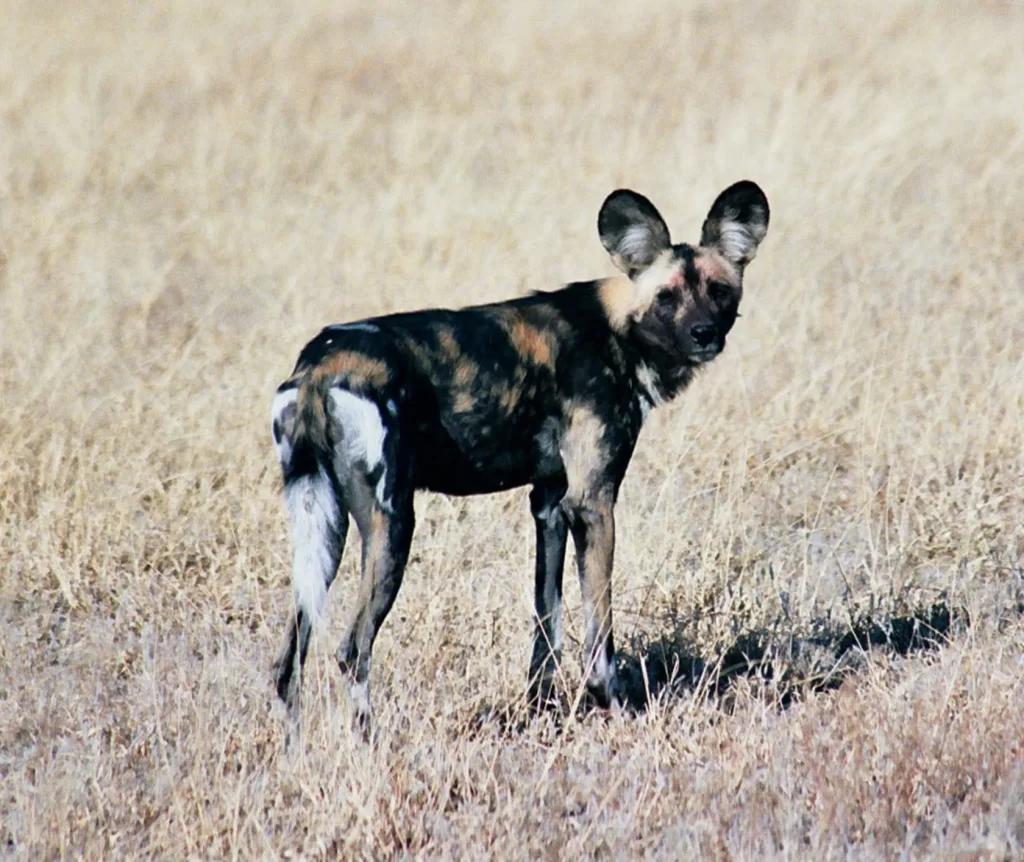
The African wild dog also known by the following names; the painted hunting dog/ the African painted dog/ Cape hunting dog/ the painted wolf/ the African hunting dog) is a highly social carnivorous animal. All African wild dogs have different and unique markings, thus making it easy to distinguish one from the other.
The African wild dog lives and hunts in packs. Its bushy tail with a white tip serves as a flag which keeps the pack in contact during hunting and due to their coordination it is hard for a prey to escape. It has been highly endangered over the past 20 years thanks to human-wildlife conflict, diseases and habitat destruction.
- Giraffe

The tallest living land animal in the world can easily be spotted in open woodlands and savannah.
Giraffes are not territorial creatures and can live in herds of more than 10 with no apparent leader. A member is free to leave or rejoin the tower (a group of giraffes) at will. Due to their social nature giraffes typically coexist peacefully with humans.
- Springbok and several other species of antelope (including the eland, gemsbok, hartebeest, steenbok, kudu, and duiker)
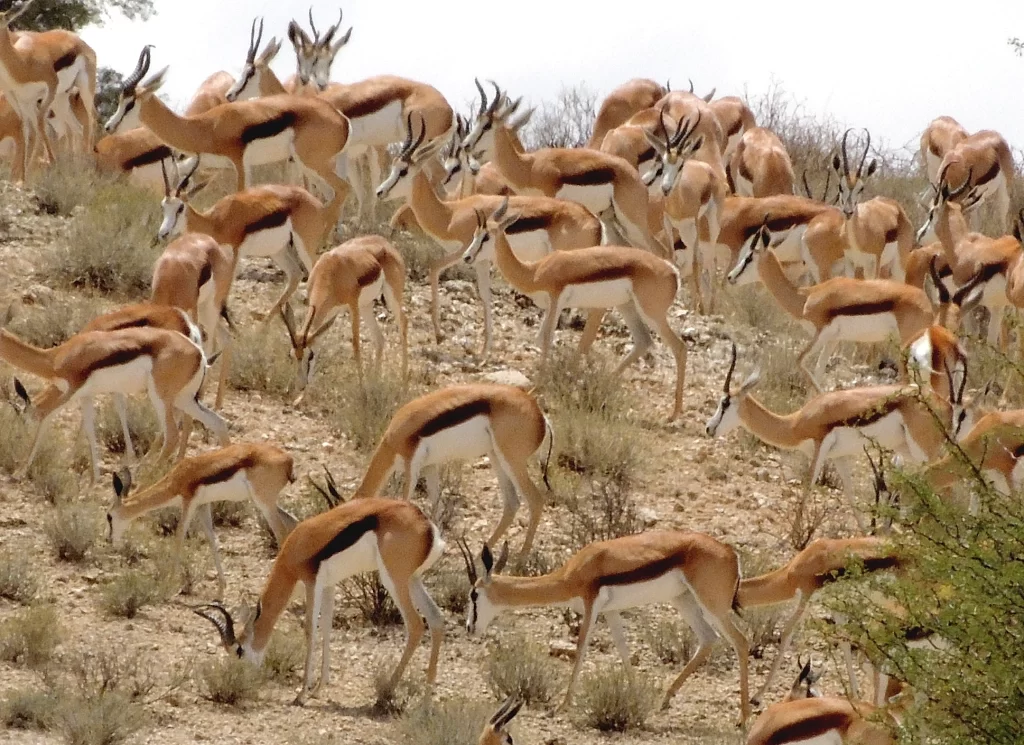
Springboks are synonymous for their graceful appearance, striking marked coats and incredible horns.
There are 91 species of antelopes with most of them present in Africa (21 are found in Kruger National Park).
- Kalahari gemsbok Oryx gazella.
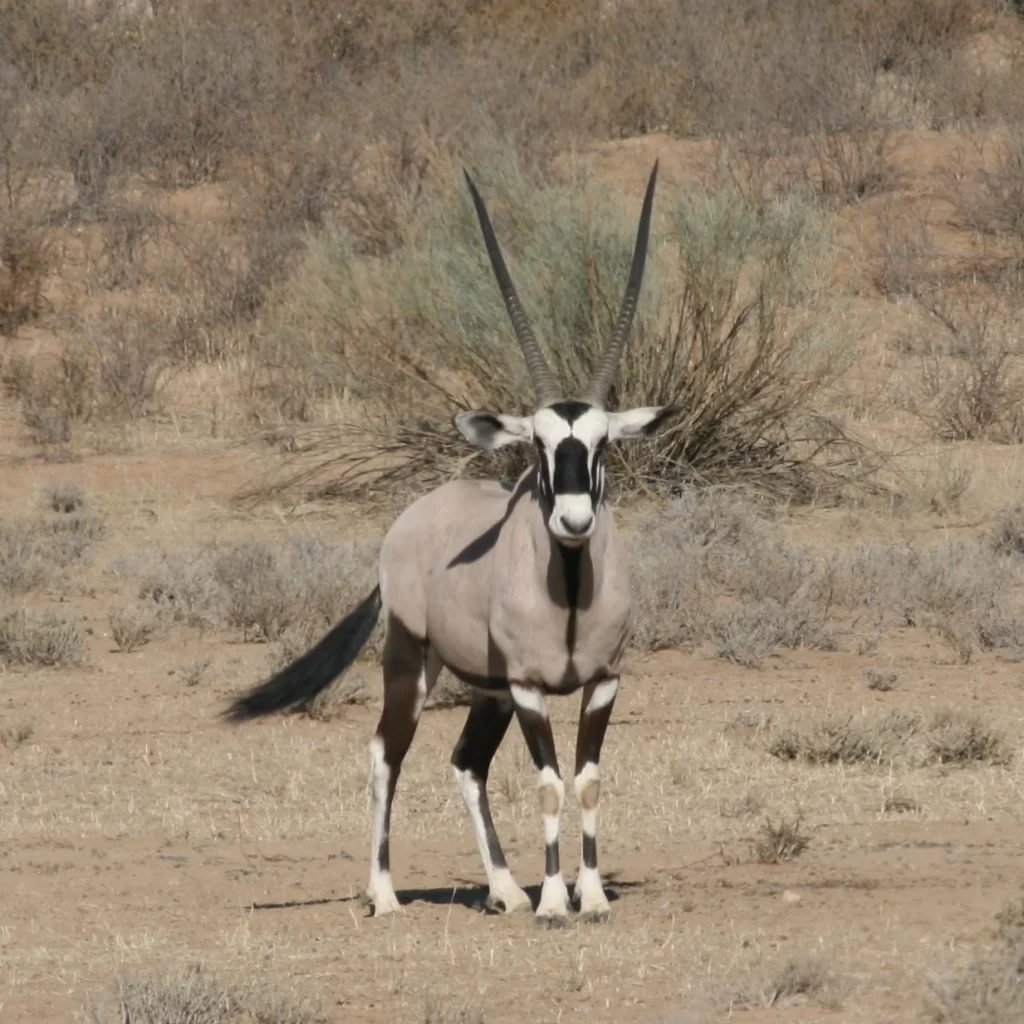
Aardvarks are spread throughout sub-Saharan Africa. The burrowing mammal is nocturnal and resembles a piglet in size.
Aardvarks are insectivorous and usually feed on termites and ants. They swallow their food whole without chewing. It is important to note that as much as aardvarks are anteaters, they are still a different species from the anteaters found in South America.
- Flamingo
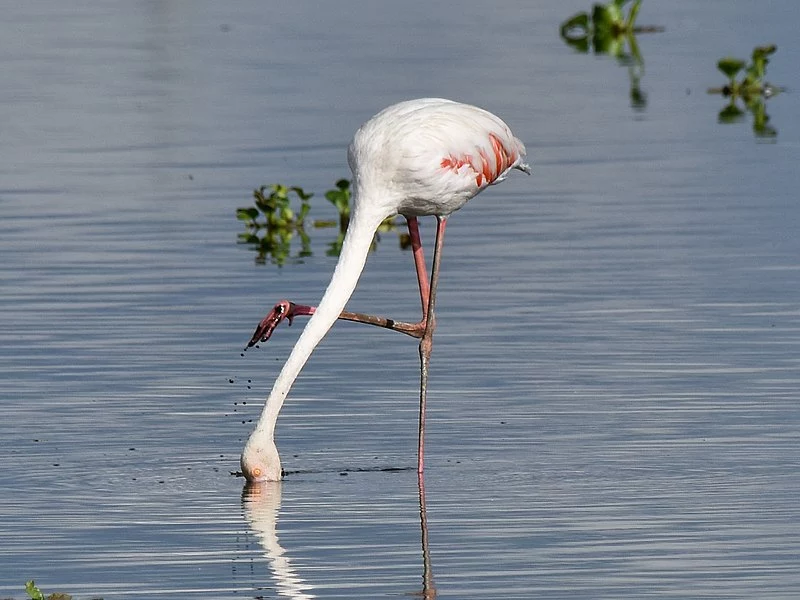
Typically found along shallow saltwater or where saltwater and freshwater mix (brackish water), the pink omnivore birds are a must see at the The Makgadikgadi Pans in the Kalahari. Flamingos filter feeders whose diet consists of tiny crustaceans, small fish and algae.
- Puff Adder
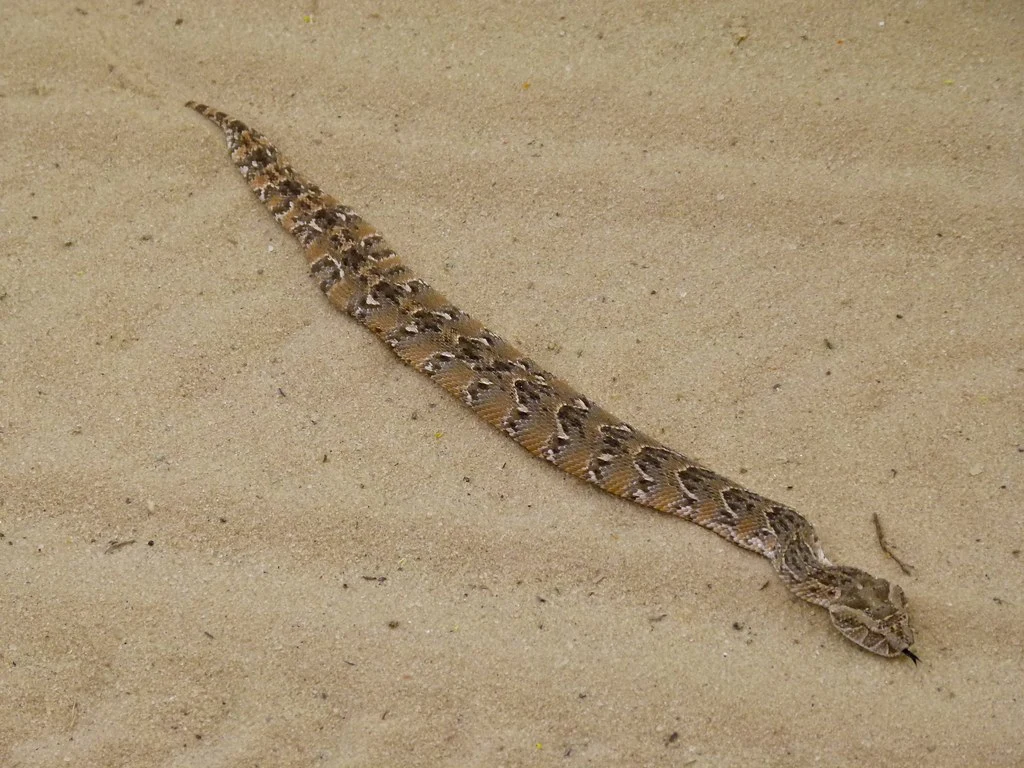
The puff adder, a venomous viper, is found in the semi-arid areas of Africa and Arabia. The carnivorous reptile’s name is derived from the fact that it gives warning by inflating its body and hissing loudly.
An adult puff adder is considered to have enough venom to kill at least 4 people. There are valid reports indicating that puff adders are responsible for the most snakebite fatalities in Africa.
- Sociable Weaver
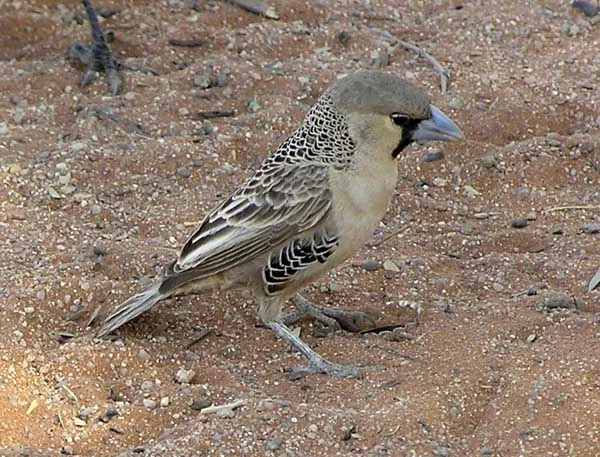
The sociable weaver is a friendly bird species which belongs to the family of sparrows. It can easily be found in the Kalahari Desert and arid savannah.
The sociable weaver is an insectivorous bird which does not drink water as it absorbs all the moisture it needs from the food it eats. Sociable weavers are famous for the nests they build which are big enough to house a colony (hundreds of birds).
- Blue-Headed Agama Lizard
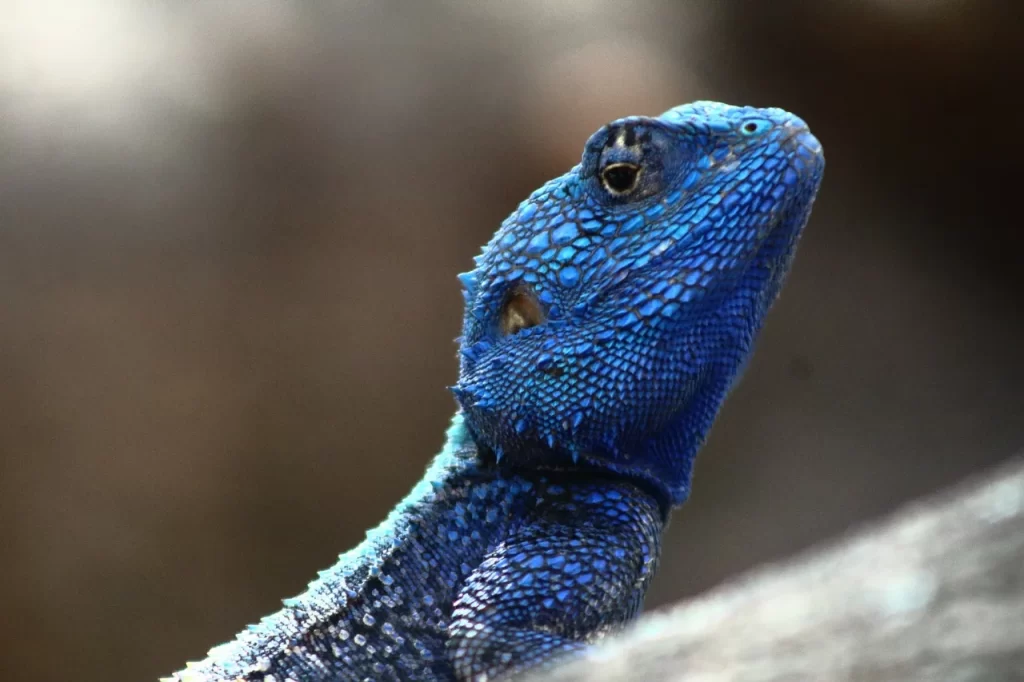
Agamas are the most dominant type of lizards in Africa. In the Kalahari Desert, their habitat is rocky outcrops. Agama lizards live in colonies whereby a dominant male rules over several females and sub-males. Because of the splash of color displays put on by dominant males, they are sometimes referred to as rainbow lizards.
People prefer having the agama lizards in their residence as the insectivores reptiles feast on all pests in the environs.
- Other Animals that live in the region include hyenas, warthogs, jackals, and many species of reptiles.
There are three species of hyenas: brown hyena, spotted hyena and striped hyena. The brown hyena is presently the rarest species of hyena and is found in the Kalahari Desert. Though small in stature, the highly endangered species uses its speed and stealth to scavenge kills from the large predators in the wild.
A wild member of the pig family, warthogs are also present in arid and moist savannas, in open plains and grasslands, like the Kalahari Desert. The herbivores travel in groups called sounders and live in burrows. They also use the burrows as a launch pad for attacks on predators.
There are three species of jackals; the side-striped jackal lives in the Kalahari Desert. Jackals are nocturnal, omnivorous scavengers. Male jackals are monogamous, meaning they only mate with the same person for life. Female jackals have a gestation period of 2 months after which they deliver a litter of at least 3 pups.
There are two families of porcupines; Old World porcupines of Africa and New World porcupines of North and South America. One porcupine has as many as 30,000 quills.
Without a doubt, the Kalahari Desert is filled with a variety of wild animals; some are common while others are highly endangered. The presence of these animals is the main reason why 4 protected areas have been established around the desert.
If a tourist is interested in the complete safari experience, to see how predators and prey exist in their natural habitats, then a visit to Kalahari Desert is sure to tick all the boxes.
